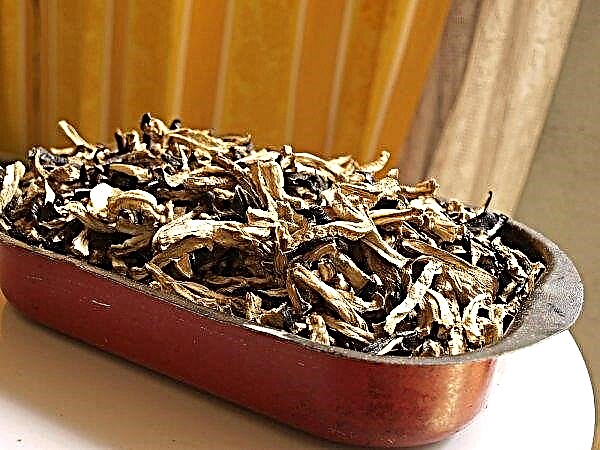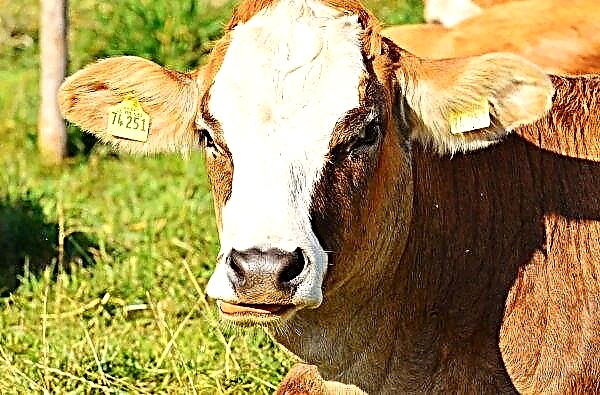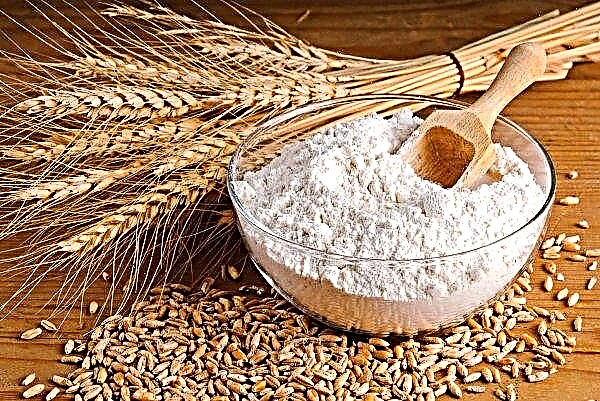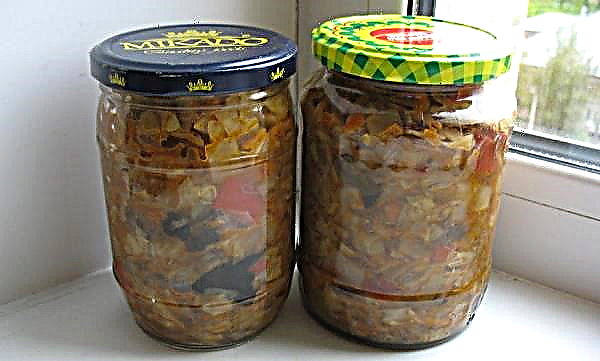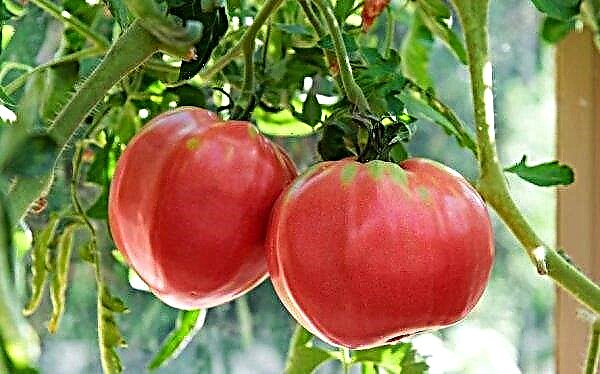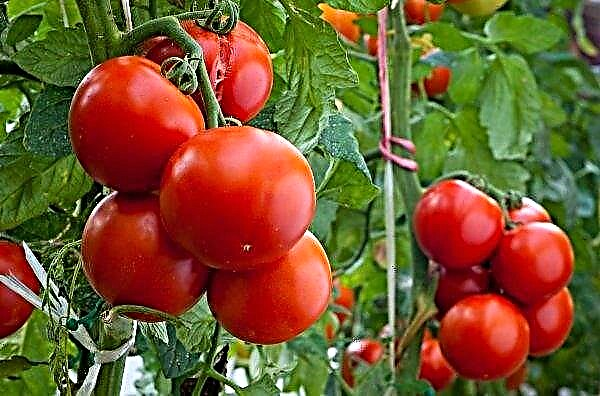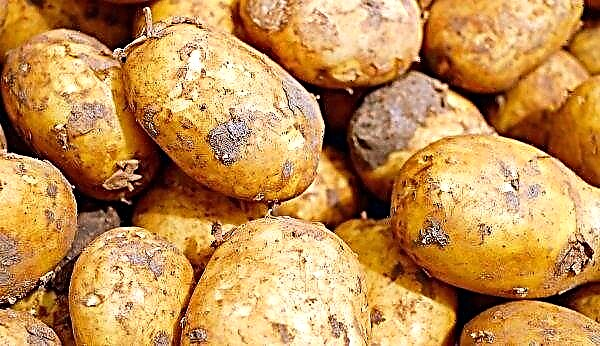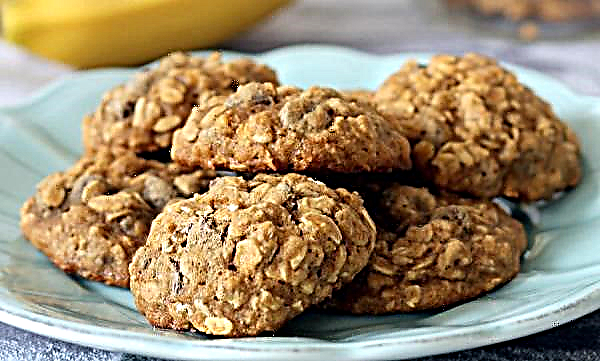Intestinal disorders in poultry always cause a lot of trouble to the farmer. One of the main difficulties is that loose stools can be caused by a variety of causes, from ordinary poisoning to serious illness. In order to provide timely and adequate assistance to the feathered herd, you first need to determine the source of the problem. A good clue here is the color and texture of the bowel movements. How to independently determine the cause of diarrhea in turkeys and how to treat a sick bird is described in this review.
Determining the cause of the disease by the color of diarrhea
The digestive system in turkeys is very sensitive to any adverse factors that affect the bird both from the inside and outside. Therefore, the failure that this system gives (and the most striking manifestation of such a failure is precisely diarrhea) is a clear signal that something is wrong with the bird.
For example, intestinal disorders can occur in an adult herd and in turkey poults as a symptom of an infectious or other disease, due to emotional shock, as a reaction to poor-quality or just new food, and also due to weakened immunity, which, in turn, is usually explained by errors in keeping or feeding. The good news for the farmer is that, depending on the specific cause of the diarrhea, the liquid bowel movements can have a different shade - from whitish to almost black, and it is for this reason, in combination with other symptoms, that an experienced owner can make an almost unmistakable diagnosis their feathered ward, without the help of a veterinarian.
The good news for the farmer is that, depending on the specific cause of the diarrhea, the liquid bowel movements can have a different shade - from whitish to almost black, and it is for this reason, in combination with other symptoms, that an experienced owner can make an almost unmistakable diagnosis their feathered ward, without the help of a veterinarian.
Yellow
One of those rare cases when intestinal upset in turkeys with the highest probability is not a cause for serious alarm is a situation in which the liquid feces in birds are colored yellow. In the vast majority of cases, feces of turkeys become watery and bright yellow when new food is introduced into the diet of the bird (the chicks are especially sensitive to unfamiliar food).
However, one should not lose vigilance. Thus, yellow is a relative and, in a sense, subjective concept. Green, white, brown notes in the color of feces can actually be an alarming symptom, therefore, having found traces of liquid stool in the house, even if they have a “harmless” yellow or, say, yellow-green color, the owner needs to watch with maximum attention livestock. If the birds are active and do not show any signs of the disease - most likely, there is nothing to worry about, however, complementary foods that could cause digestive problems should be temporarily excluded from the diet or at least limited.
Thus, yellow is a relative and, in a sense, subjective concept. Green, white, brown notes in the color of feces can actually be an alarming symptom, therefore, having found traces of liquid stool in the house, even if they have a “harmless” yellow or, say, yellow-green color, the owner needs to watch with maximum attention livestock. If the birds are active and do not show any signs of the disease - most likely, there is nothing to worry about, however, complementary foods that could cause digestive problems should be temporarily excluded from the diet or at least limited.
Did you know? In the so-called Pantone Matching System color model, developed by the Americans in 1963 and representing a catalog of colors with special digital identification (used in printing), the yellow color has 136 different shades - from muted beige to bright mustard.
Green
Liquid stools of green color, sometimes with bloody patches, along with loss of appetite, changes in behavior (lethargy) and appearance (tousled plumage, half-closed eyes, etc.) are characteristic symptoms of the initial stage of coccidiosis. In the later stages of this disease, feces darken and turn brown.
Feces in poultry also become liquid and green with pasteurellosis. This disease, also known as bird cholera, is bacterial in nature (the pathogen was discovered in 1880 by the French biologist Louis Pasteur and received the name "author" - Pasterella) and is treated with antibiotics, but if help does not arrive in time, you can easily lose a significant part of the herd - according to statistics, the mortality rate of the disease ranges from 30 to 90%. A distinctive feature of pasteurellosis is that diarrhea in this case is malleable and foamy (bloody patches that indicate damage to blood vessels). It is also noted that the disease most often affects broiler turkey poults.
Finally, another dangerous disease, accompanied by green diarrhea with blood, is pseudo-plague, also known as Newcastle disease. The infection is of a viral nature, spreads extremely quickly, affects almost all organs of the bird (kidneys, liver, spleen, brain, lungs) and kills from 60 to 90% of infected individuals. The incubation period of pseudo-plague can last from 3 to 12 days, after which very severe symptoms of the disease appear - paralysis, shortness of breath, conjunctivitis, accumulation of mucus in the oral and nasal cavities, etc.
Unlike coccidiosis and pasteurellosis, Newcastle disease is not treated in birds; the only way to protect the herd from it is to vaccinate or limit contact with possible carriers. That is why if the bowel movements of turkeys become liquid and turn green, even in the absence of blood in the feces, the bird should be immediately shown to the veterinarian to establish an accurate diagnosis and, in one case, to prescribe an adequate treatment, and in the other, to isolate and slaughter the affected individuals.
Important! Coccidiosis is a parasitic disease that can affect any of the farm birds. Often the source of infection is pigeons. If this disease is not fatal for adults (the bird can be carriers of coccidiosis, but at the same time it looks completely healthy), then among young animals the epidemic can easily mow up to half the herd.
Mustard color
A mustard shade of feces in turkeys can occur with histomonosis (other names - enterohepatitis and typhlohepatitis). This dangerous infectious disease is caused by the simplest (unicellular) parasites of the histomonad family in the flagellar or flagellate phase. The disease affects the liver of the bird and, in the absence of adequate treatment, often leads to death. Distinctive signs of diarrhea accompanying histomoniasis is a specific unpleasant odor of feces, as well as a gradual change in their shade - from pale yellow to mustard (brown-green). Characteristic symptoms of the disease are also swelling and cyanosis (a bluish tint of the skin and mucous membranes), a decrease in body temperature, muscle cramps up to convulsions.
Distinctive signs of diarrhea accompanying histomoniasis is a specific unpleasant odor of feces, as well as a gradual change in their shade - from pale yellow to mustard (brown-green). Characteristic symptoms of the disease are also swelling and cyanosis (a bluish tint of the skin and mucous membranes), a decrease in body temperature, muscle cramps up to convulsions.
Important! A well-known popular name - “black head” - got histomonosis due to the fact that at a certain stage of the disease the head of an infected bird becomes huge due to severe swelling, and the skin in this area acquires a dark color (gray-purple in adults and almost black - in young animals).
At the same time, one must be aware that mustard color is an evaluation category. A similar shade of feces can be regarded as one of the variations of yellow or brown - the colors that most often characterize ordinary food poisoning or problems with the digestion of new or inappropriate food for the turkey. If liquid stools of mustard color are the only deviation in the behavior of the feathered herd - most likely, the bird just ate something wrong.
Brown
The brown color of diarrhea, as well as yellow, is almost never associated with severe pathology. Reasons to look for in the nutrition of poultry. However, if yellow turkey is most common in turkeys when new foods are introduced into their diet, then in adults, inappropriate foods and mixtures cause disorders with the release of brown liquid instead of normal droppings. If no disturbing symptoms, except for diarrhea and direct signs of food poisoning, are observed in birds, the diet should be adjusted, and most likely the problem will be solved by itself. In especially difficult cases (when the cause of intoxication is obvious), the flock is drunk with a weak solution of potassium permanganate or another disinfectant, but special treatment in this situation is usually not required.
If no disturbing symptoms, except for diarrhea and direct signs of food poisoning, are observed in birds, the diet should be adjusted, and most likely the problem will be solved by itself. In especially difficult cases (when the cause of intoxication is obvious), the flock is drunk with a weak solution of potassium permanganate or another disinfectant, but special treatment in this situation is usually not required.
White
Oddly enough, it is the white color of diarrhea in turkey poults, on the one hand, is one of the most alarming signals for the owner of the bird herd, and on the other, it causes the least difficulties with diagnosis. Fecal masses acquire this color when the feathered herd is affected by pullorosis (better known as salmonellosis) or paratyphoid. Both of these ailments are bacterial in nature, moreover, their pathogens belong to the same genus - Salmonella (pullorosis most often causes Salmonella pullorum - gallinarum, paratyphoid - Salmonella paratyphi and Salmonella schotmulleri). Salmonella is very tenacious. They can remain viable in water and at sub-zero temperatures, and even in bird droppings they are perfectly preserved for months. The most dangerous bacteria for chicks (pullorosis can completely destroy all turkey poults in the first 3 weeks of life, while adults, being carriers of the disease, will look completely healthy in appearance). Therefore, if white, liquid, fetid and foaming stools are found in birds, it is necessary to immediately clarify the diagnosis and begin antibiotic treatment.
Salmonella is very tenacious. They can remain viable in water and at sub-zero temperatures, and even in bird droppings they are perfectly preserved for months. The most dangerous bacteria for chicks (pullorosis can completely destroy all turkey poults in the first 3 weeks of life, while adults, being carriers of the disease, will look completely healthy in appearance). Therefore, if white, liquid, fetid and foaming stools are found in birds, it is necessary to immediately clarify the diagnosis and begin antibiotic treatment.
Did you know? The intestinal bacteria of the Salmonella genus got their name from the American veterinarian Daniel Elmer Salmon. It was he who in 1885 discovered and "presented" to the world the first representative of this parasite.
The black
If brown and yellow diarrhea in a poultry is a sign of poor or improperly balanced nutrition, then black feces are almost 100% likely to signal serious intoxication of the body, accompanied by the development of inflammatory processes in the gastrointestinal tract and the presence of internal bleeding (it is blood that, mixed with droppings, gives it a charcoal black color).
accompanied by the development of inflammatory processes in the gastrointestinal tract and the presence of internal bleeding (it is blood that, mixed with droppings, gives it a charcoal black color).
In such situations, it is necessary to take emergency measures aimed at removing the toxin from the body, and if the symptoms are noticed too late, consult a doctor for an appropriate symptomatic treatment.
Concomitant symptoms of diarrhea
Diarrhea in poultry can be accompanied by various symptoms, the combination of which, in fact, allows you to make the correct diagnosis with maximum reliability.
Regardless of what the cause of the intestinal disorder is, it usually causes the following changes in the behavior and appearance of the turkeys:
- Loss of appetite and, consequently, a slowdown in weight gain. Both poisoning and any other inflammatory process dulls the feeling of hunger, and almost all animals refuse food during the acute course of the disease.
- Increased thirst. Diarrhea causes an increased loss of fluid in the body, so the bird must constantly drink to make up for the disturbed water balance.
- Depression, lethargy and apathy. Diarrhea in itself is a phenomenon that is very exhausting. If the protective mechanisms of the bird are aimed at combating a specific parasite that caused intestinal upset, then the turkey does not have any energy left to perform the usual actions (walking, talking with relatives, etc.). Birds in such a situation usually sit, with a frown, with lowered wings and half-closed eyes.
- The plumage becomes dull, sometimes stray into dirty clods (especially in the cloacal area) or begins to fall out.
- Body temperature changes. With some infectious diseases, it rises, with others it decreases. Poisoning is also usually accompanied by a decrease in body temperature due to the weakening of the bird and the slowdown of all processes occurring in its body.
Very disturbing symptoms are cases when the whole herd gathers in the warmest part of the house and presses into a single pile, trying to keep warm. Throwing back the head, mouth and nasal cavities clogged with mucus, coughing, conjunctivitis, cramps - all this also indicates that the birds did not just poison themselves. In no case should the turkeys cease to stay on their feet (as farmers say they have not become rich), urgently need to provide assistance to sick individuals and, at the slightest suspicion of infection, isolate them from the rest of the herd.
In no case should the turkeys cease to stay on their feet (as farmers say they have not become rich), urgently need to provide assistance to sick individuals and, at the slightest suspicion of infection, isolate them from the rest of the herd.
How and how to treat diarrhea in turkeys at home
The farmer who has faced the problem of diarrhea in turkeys, first of all, needs to realize that diarrhea is not a disease, and therefore it cannot be "cured" in the usual sense of the word. The first thing to do in this case is to determine if an intestinal disorder is a reaction to food or is it a possible infection. The answer to this question directly determines what needs to be done next. It is necessary to analyze the following factors together:
It is necessary to analyze the following factors together:
- whether an intestinal disorder is observed in the entire herd or in one individual (an infection, even a very fast-spreading infection, rarely affects all the inhabitants of the house, therefore, at the same time, massive diarrhea that has begun is more likely to indicate problems with food);
- whether diarrhea was preceded by the introduction of a new component in the diet;
- whether turkeys have a theoretical opportunity to contact a potential spread of infection (wild birds, rodents, etc.);
- whether new individuals acquired on the side and did not pass quarantine appeared in the herd on the eve (if so, first of all, it is necessary to pay attention to the state of newcomers);
- Do sick birds have other symptoms that are not directly related to an intestinal disorder (for example, mucus from the nose, cough, inflammation of the eyes, etc.).
If there is reason to suspect an infection, then treatment should be carried out using medications, and the sooner it is started, the better. In normal food poisoning, it is sufficient to flush the bird with disinfectant solutions. In this case, it is quite possible to use various medicinal herbs and other folk remedies.Did you know? The gastrointestinal tract in turkeys is a very stable system that can easily cope not only with very rough food, but even with many completely inedible objects. A piece of glass swallowed by a turkey is digested with virtually no residue. However, before parasites, which are the natural enemies of all birds, turkeys are as powerless as their flying relatives.
Medications
The main feature of treating diarrhea in turkeys is that there is, in general, no accurate diagnosis. As already mentioned, most dangerous ailments causing diarrhea in poultry are caused by bacteria or protozoa.
In order to increase the effectiveness of treatment and to eliminate errors associated with the correct identification of the parasite, modern pharmacology provides farmers with a huge selection of drugs with a wide spectrum of action, which can successfully cope with any of the possible "enemies". Viruses are an exception to this rule, but science is almost powerless against them, but vaccination shows very good results.
One of the most popular drugs used to treat diarrhea in turkeys is Metronidazole. It is an antibiotic and antiparasitic agent “in one bottle”. It is very effective for the treatment of histomoniasis, coccidiosis and trichomoniasis, as well as many other bacterial infections. The drug must be given to birds 3 times a day for a 10-day course at the rate of 10 mg per 1 kg of live weight per time. An alternative way is 0.75 g of the drug per 1 kg of feed, mix thoroughly and give the turkeys 1 time per day (the course duration is the same). The latter option, of course, is more convenient, however, taking into account the fact that sick birds, as mentioned above, eat very poorly, in this case there is no guarantee of the effectiveness of the treatment.
The drug must be given to birds 3 times a day for a 10-day course at the rate of 10 mg per 1 kg of live weight per time. An alternative way is 0.75 g of the drug per 1 kg of feed, mix thoroughly and give the turkeys 1 time per day (the course duration is the same). The latter option, of course, is more convenient, however, taking into account the fact that sick birds, as mentioned above, eat very poorly, in this case there is no guarantee of the effectiveness of the treatment.
It is also important to note that since coccidiosis, trichomoniasis, histomonosis, pullorosis, paratyphoid and other infections accompanied by diarrhea are incomparably more dangerous for turkey poults than for adult birds, young Metronidazole is usually given for prophylactic purposes without waiting for the onset of symptoms of the disease. In this case, for 2 days (some farmers just in case extend the course to 3 or even 5 days), chicks at the age of 2 months are given Metronidazole in a dosage of 20 mg per 1 kg of live weight.
No less common remedy for diarrhea in turkeys and turkeys is furazolidone. A 2-week course of taking this drug involves mixing it with food or water at the rate of 0.4 g per 1 kg of food (drink). This is followed by a break for 2 weeks, after which, if necessary, the treatment course is repeated. Aventmentronide has properties similar to these drugs, but it is better to mix it with water, and not with food.
Aventmentronide has properties similar to these drugs, but it is better to mix it with water, and not with food.
Enteroseptol, an antimicrobial that is not related to antibiotics, has also proven itself in the treatment of intestinal disorders. The course of treatment is 10-15 days, a daily dose of 30 mg per 1 kg of live weight.
Another very famous drug is Iodinol. It must be diluted with clean water in a ratio of 1: 2 and a few days a herd should be drunk with the resulting solution. From salmonellosis, a drug called Osarsol helps very well. They drink sick birds within a week (a single dose - 0.2 g per 1 kg of body weight).
From salmonellosis, a drug called Osarsol helps very well. They drink sick birds within a week (a single dose - 0.2 g per 1 kg of body weight).
Among the antibiotics used to treat intestinal disorders in turkeys, the following should be mentioned:
- Chloramphenicol;
- Tetracycline;
- Lautecin;
- Mepatar;
- Chlortetracycline;
- Biomycin;
- Trimerazine.
Very often, a drug such as Nystatin is used to treat diarrhea in farm birds, but you should be aware that this is not an antibiotic, but an antifungal. Along with Moronal, Nystatin is effective in case of damage to the gastrointestinal tract or other organs of turkeys with mycelia of pathogenic fungi (for example, with candidiasis or aspergillosis), however, it is practically useless for the treatment of the infections mentioned above. For preventive purposes, Nystatin is added to feed turkeys at the rate of 1 g per 10 kg. Finally, among the medicines used to combat intestinal disorders in turkeys, a special group is sulfanilamide drugs (for example, sulfadimezin). They should be given 2 times a day, 0.5 g per 1 adult (older than 3 months).
Finally, among the medicines used to combat intestinal disorders in turkeys, a special group is sulfanilamide drugs (for example, sulfadimezin). They should be given 2 times a day, 0.5 g per 1 adult (older than 3 months).
Important! The course of treatment with such drugs and the dosage is still better to check with the veterinarian, since the uncontrolled use of antibiotics, including without the direct need for it, can not only worsen the condition of the bird, but also lead to the formation of new strains of microbes that are resistant to the active substance of the drug.
Folk remedies
Before using folk remedies for diarrhea in poultry, you should definitely adjust the diet of birds, otherwise the treatment will not be effective.
Within a few days, stools in turkeys can be normalized by giving them the following folk potions as a drink or food:
- Clay Chatterbox. White clay can be easily purchased in a regular pharmacy and diluted with water in accordance with the instructions.

- Viscous rice porridge. Use round grain rice. At the same time, it should be boiled in enough water for 1 hour, so that the resulting mass becomes mucus and almost homogeneous.
- Chamomile decoction. The concentrated solution (2 tablespoons of dry raw materials per 250 ml of boiling water, bring to a boil and steam for several hours, then strain the liquid) is added to the drink in small portions. If the drink is too saturated, the bird may refuse to drink it due to the bitterness present in the chamomile.

- Pomegranate crust broth. Having eaten exotic fruit, do not rush to throw away crusts. If they are well dried in a shaded place, you will get an excellent natural antibacterial agent. The broth is prepared using the same technology as chamomile; a larger portion can be added to the drink.
- Green tea. The drink should be brewed sufficiently weak (about 1 teaspoon per 1 liter of water), cool and just pour into the drinker.
- Nettle broth. The recipe is similar to chamomile. Instead of nettle, you can use wormwood, however, along with very strong antiseptic properties, this plant has a bitter taste, so you need to add it to the drink in small portions.
 Unlike antibiotics, the aforementioned folk remedies are safe for the body of birds, therefore, they can be fed to both sick and healthy individuals without making any distinction.
Unlike antibiotics, the aforementioned folk remedies are safe for the body of birds, therefore, they can be fed to both sick and healthy individuals without making any distinction.Important! Very often, intestinal disorders in turkeys arise from the inclusion of eggs in their food. Such a product, for all its nutritional value, is poorly suited for fattening chicks, so with diarrhea that has begun, it should be excluded first of all.
Diet and care for turkeys after illness
One of the most effective ways to treat diarrhea caused by food poisoning is through a starvation diet. With severe intestinal disorders, birds need to stop feeding during the day, giving them as much fluid as possible in order to prevent dehydration.
Then, when the condition of the herd is normalized, regular feeds can be gradually introduced into the diet, excluding fatty and high-calorie foods, such as corn, eggs, dairy products, etc. Also, in the first weeks after the illness, the bird should not be given fresh greens.
If the treatment was accompanied by the use of antibacterial drugs, then it is necessary to restore the normal functioning of the bird's body by adding special vitamin complexes to the diet, such as, for example:
- Chiktonik;
- "Rich";
- "Ganasupervit";
- "Sun";
- "Nutricelen";
- "Trivitamin."
Preventative measures
As you know, the best way to treat a disease is to prevent it.
In order for diarrhea not to torment the feathered herd, the following general preventive measures should be performed:
- Acquire poultry only from trusted distributors and place the "new arrivals" in 2-week quarantine before transferring them to a common herd.
- Keep adult birds separate from young animals. Mature birds can easily tolerate many dangerous diseases, so the farmer may not be aware that an individual is infected, but such a dangerous contact can be fatal for turkey poults.
- If possible, protect turkeys, and especially turkeys, from severe stresses that weaken the immunity of birds.
- Thoroughly disinfect the room in which the young was kept before placing the next generation of chicks in it.
- Use high-quality feeds that have undergone preventive treatment from pathogens of dangerous infections for feeding birds (for example, flour worms may well be carriers of salmonellosis).
- To isolate turkeys from contacts with wild birds, rodents, insects, ticks and other carriers of parasitic diseases.

- Water the bird only with purified water, do not allow the feathered herd to water in open reservoirs.
- Use protective clothing and shoes when entering the house (coccidia, salmonella and other parasites can be brought into a room where turkeys are kept by maintenance staff).
- Timely identify, isolate and, if treatment is not possible, kill the infected bird with the obligatory subsequent destruction of the carcass.
- Monitor the cleanliness of the house, timely change the litter, provide other sanitary and technical conditions for keeping turkeys (temperature, humidity, ventilation, etc.).
- Install feeders and drinking bowls in the poultry house at the level of the turkey’s chest so that the birds could not climb into such containers with their paws (one of the most common sources of infection is getting into the gastrointestinal tract of a bird of infected droppings).
- To provide the livestock with a full and balanced diet, rich not only in substances that promote rapid mass gain, but also in vitamins, minerals, amino acids and other nutrients important for the normal development of birds.
The preventive measures to prevent the development of the most dangerous diseases in turkeys usually include the use of antibiotics, coccidiostatics and other antiparasitic drugs. Such methods of solving the problem are denied by supporters of organic poultry farming and are justified only when, in pursuit of quick profit, the producer does not want or cannot create normal sanitary conditions for the birds.
It is not necessary to expect that such a vicious practice will lose relevance on large poultry farms, however, if turkeys are grown for their own use, it would be right to abandon the use of antibiotics as prevention.
Finally, in order to guarantee the protection of the livestock against the deadly Newcastle disease, turkey poults should be vaccinated. For this purpose, a preparation is used from the so-called La Sota strain, which is the extraembryonic fluid of a chicken germ infected with paramyxovirus - the causative agent of pseudo-plague.
Vaccinations are done 4 times:
- at 14 days (some experts advise the first vaccination to be done later, from the 16th to the 21st day);
- in 35 days;
- at 2 months;
- in 125 days.
Diarrhea is a very common problem that occurs in a turkey flock. Even if an intestinal disorder is not associated with a serious infection, it greatly depletes the bird's body, leads to dehydration and intoxication, which is especially dangerous for chicks and is often the cause of their death. By the color of feces and some other symptoms, it is very likely to determine the cause of diarrhea, after which it is much easier to make the right decision about what kind of help the bird requires, are there any reasons for using medication and the administration of strictly karate, or you can limit yourself to a hungry diet and plentiful drink with the addition of disinfectants.




